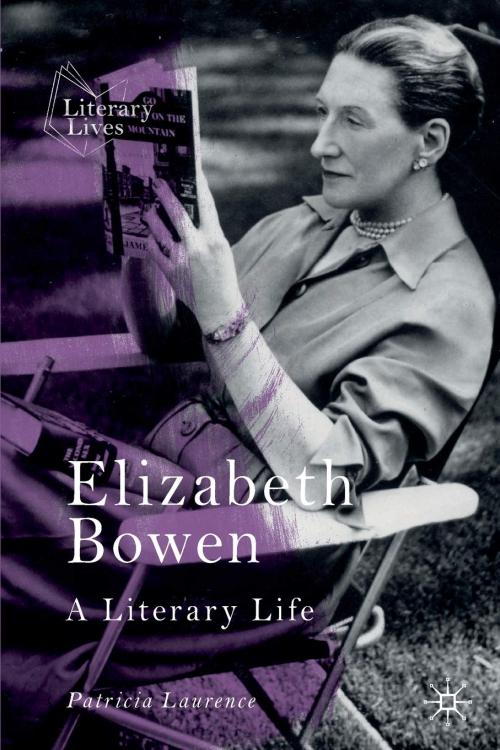In Case You Missed It Part 9: Selected Recent Acquisitions
The Acquisitions Department returns with another installment of noteworthy recent arrivals that haven't received the attention they deserve. As always, we present a highly subjective selection of books that caught our eye. The books here were culled from mostly from our late 2020-early 2021 new book lists. It was difficult to narrow our selection down, many good books were left behind when we finally cut ourselves off and clicked "publish."
There is no substitute for slowly scanning the monthly lists in their entirety, available on the website and in the Library. Each contains 200 – 250 titles, and hopefully something for every reader in our membership. See the current list here.
See ICMYI-8 for our previous round of recent selections, and all earlier ICYMI posts are still available on our website. —Steven McGuirl & Patrick Rayner, Acquisitions
Jump to any of the categories below: ARTS & LITERATURE | PHILOSOPHY | TRAVEL & DESCRIPTION | FICTION | HISTORY | SCIENCE & MATH | PERIODICALS
ARTS & LITERATURE (Language, Essays, Poetry)
The Musical Human: A History of Life on Earth | Michael Spitzer
In The Musical Human, Michael Spitzer covers over 100 million years of history and roams over much of the globe to show music’s central role in human development. Writing in the Literary Review, Matthew Lyons praises “the breathtaking variety of sources” employed by Spitzer, and notes that over the course of the book’s argument “a range of themes emerges: music’s ability to express the inexpressible; the extent to which the development of music, particularly in the West, represents a rupture with nature; how we use music to order and explain our lives and our societies. It is peppered with fascinating thoughts, questions and insights.” Book reviewers and blurbers rely on the word “magisterial” too often, but Spitzer’s book seems to deserve the accolade.
Patch Work: A Life Amongst Clothes | Claire Wilcox
In great museums, individual objects are displayed and described by an expert to provide the context that illuminates their meaning. Successful curators can use such displays to create something more than the sum of the individual pieces. In Patch Work, Claire Wilcox, a curator of fashion at the Victoria & Albert Museum, marshals a series of vignettes describing garments she’s owned or fabrics she’s studied into a extraordinary sort of memoir. The Wall Street Journal raves, “In this remarkable self-portrait, [she] has set out mementoes of her life like objects in an exhibition. Short chapters, some only half a page, are displayed like treasures in a cabinet of curiosities, following no chronological order...The result is magical.”
Elizabeth Bowen: a Literary Life | Patricia Ondek Laurence
Elizabeth Bowen (1899-1973) is a perennially popular author at the Society Library, with a devoted (and growing) following of admirers. This book is sure to delight her many readers. Patricia Laurence, Professor Emerita of English, City College, illuminates Bowen’s multi-faceted life as a public intellectual, propagandist, spy, cultural ambassador, journalist, and an essayist as well as a writer of fiction. The book reveals how this range of life experience fueled her writing. It also examines the circle of friends, lovers, intellectuals, and writers she kept, including Isaiah Berlin,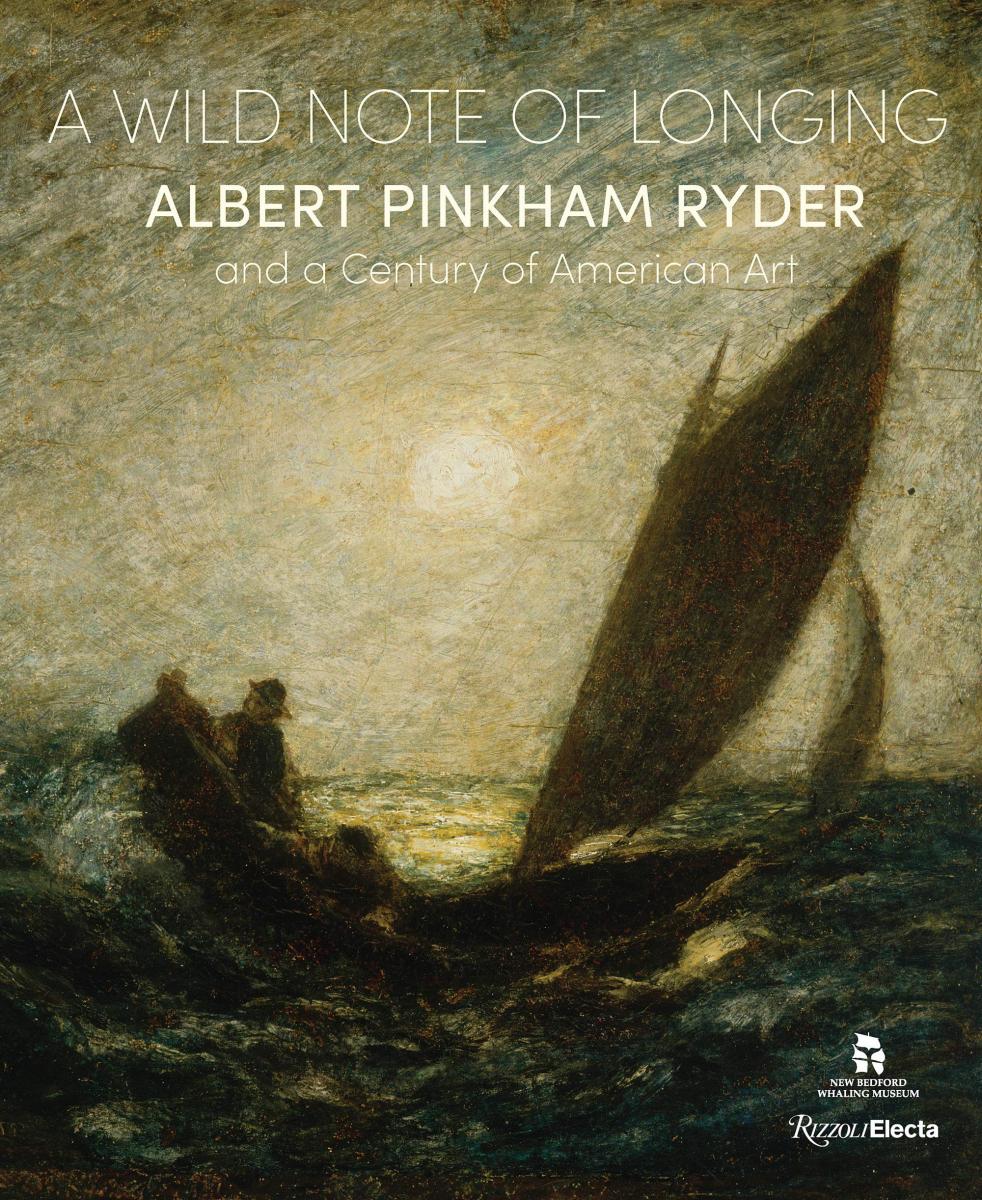 Sean O’Faolain, Virginia Woolf, Rosamond Lehmann, and Eudora Welty, among others. The Library has an extensive collection of books by Bowen, in the stacks (and a handful of ebooks and audio-downloads in the Cloud Library.) A new book of stories selected by Tessa Hadley is on its way from England and should arrive shortly.
Sean O’Faolain, Virginia Woolf, Rosamond Lehmann, and Eudora Welty, among others. The Library has an extensive collection of books by Bowen, in the stacks (and a handful of ebooks and audio-downloads in the Cloud Library.) A new book of stories selected by Tessa Hadley is on its way from England and should arrive shortly.
A Wild Note of Longing: Albert Pinkham Ryder and a C
The Eccentrics and other American Visionary Painters | Abraham A. Davidson
Ralph Albert Blakelock | Abraham A. Davidson
Three recent arrivals feature American painters of the late 19th-century and early 20th-century that broke with realist styles of the era and forged a more personal “visionary” method that looked forward to modernism. A Wild Note of Longing is a beautifully and generously illustrated 2020 catalog from an exhibition at the New Bedford Whaling Museum. It includes essays that cover various aspects of Albert Pinkham Ryder’s life, work, and influence on later American artists such as Marsden Hartley and Jackson Pollock. Abraham Davidson’s Ralph Albert Blakelock is a comprehensive, definitive study of the artist’s work and strange and tragic life. (Thank you, Strand bookstore for allowing us to purchase this now hard-to-find work.) Davidson’s The Eccentrics and Other American Visionary Painters looks at Blakelock and Ryder and about a dozen other painters whose “visionary painting was like a small stream meandering slowly beside the great torrents of 19th-century America art.”
Scoundrels & Spitballers: Writers and Hollywood in the 1930s | Philippe Garnier
For those interested in exploring the darker corners of American filmmaking history, this book truly delivers. Through an extensive series of interviews and deep dives into archives, Garnier has fashioned an entertaining 'crazy quilt' of fact-packed profiles and anecdotes that provide fascinating insight into not only how Hollywood used and exploited writers in the 1930s, but just as importantly, how writers used and exploited Hollywood. Don't look for oft-repeated stories about Faulkner and Fitzgerald's "time in the sun." In Garnier's book, the marquee names are Nathanael West and James M. Cain, followed by Horace McCoy, Edward Anderson, and Buzz Bezzerides. A colorful cast of largely forgotten "tramp newspapermen," pulp and proletarian writers, bookstore workers, and drifters, drunkards and jailbirds figure just as prominently. Some of the "informants" are as interesting as the writers under discussion, and in many ways, this book is about memory and how history is recorded.
Eileen Gray, Designer and Architect | Cloé Pitiot and Nina Stritzler-Levine, editors
Based in England and France, Eileen Gray was a pioneering, influential designer of furniture and lighting, and later in life, an architect, who carved out a lasting space in the male-dominated world of Modernism. (One of her chairs famously sold for €22m in 2009.) This book is published by Yale to accompany a 2020 exhibition at the Bard Graduate Center Gallery, providing an in-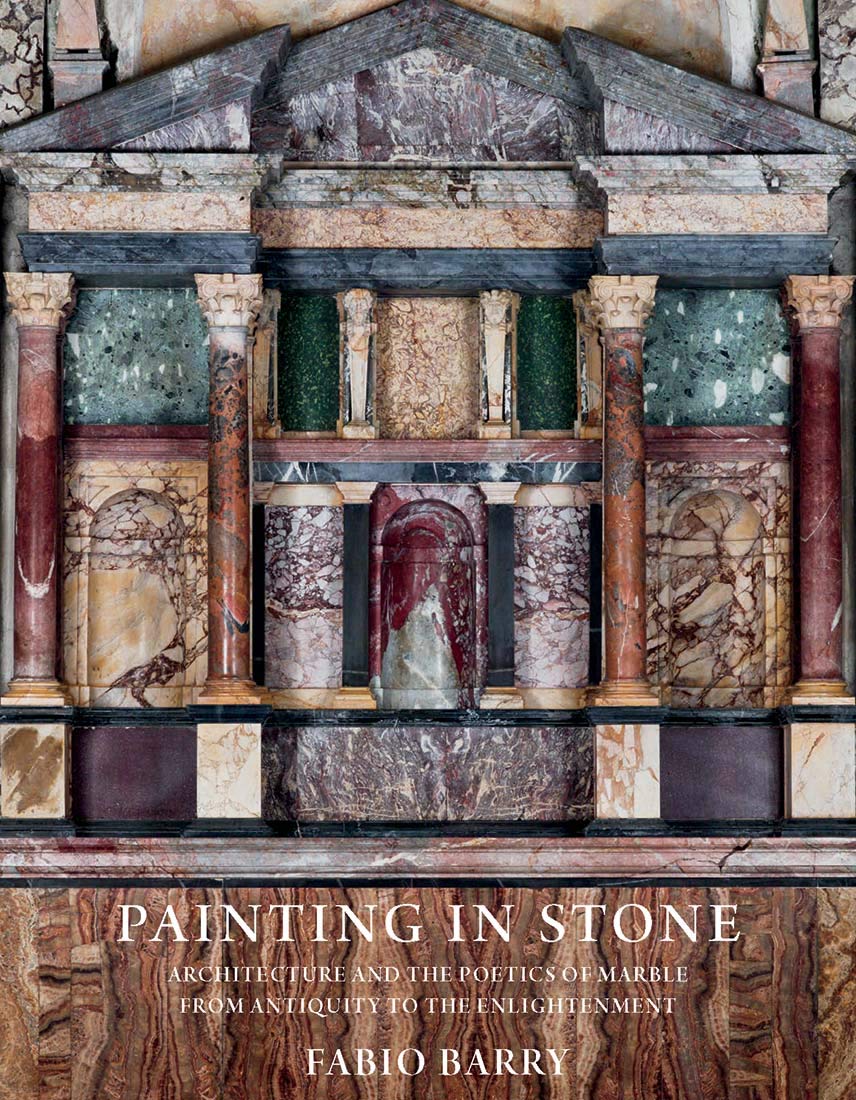 depth chronicle of Gray's varied career and movement among numerous literary and artistic circles. The book's essays provide analysis of more than 50 individual designs and architectural projects. You can read about Gray and the Bard exhibition in the Guardian.
depth chronicle of Gray's varied career and movement among numerous literary and artistic circles. The book's essays provide analysis of more than 50 individual designs and architectural projects. You can read about Gray and the Bard exhibition in the Guardian.
Painting in Stone: Architecture and the Poetics of Marble from Antiquity to the Enlightenment | Fabio Barry
The Literary Review: “Painting in Stone exhaustively traces the use of coloured marbles in European architecture. Fabio Barry (Department of Art and Art History at Stanford University) takes us on a kaleidoscopic odyssey from Mycenae to Baroque Rome, with an epilogue bringing the story up to the present day...peppered with arresting insights, quotes and information. It is also a wonder to behold, full of fantastic colour photographs.” Illustrations include the synthetic gems used to simulate Sumerian and Egyptian heavens; the marble temples and mansions of Greece and Rome; the painted palaces and polychrome marble chapels of early modern Italy; and the multimedia revival in 19th-century England.
Walker Evans: Starting from Scratch | Svetlana Alpers
Alpers is the author of numerous books on Eurpean Art History, and has taught at University of California, Berkeley and New York University. Here she turns her keen eye on Walker Evans’ eye and explores the making of his iconic photographs of 20th-century America. Alpers looks closely at the influence of literature on Evans’ approach to photography (Evans saw photography as “the most literary of the graphic arts”) and places his work in a dialogue with writers like Flaubert and Baudelaire. Alpers’ close readings are direct, clear, engaging, and compelling, and reveal how Evans’s photographic method belongs in the company of artists like William Carlos Williams and others who worked toward inventing new art to represent America. The book begins with 143 pages of full-page reproductions of Evans' photographs.
The following thematically arranged volumes in this series recently arrived from England. All volumes are about 100 pages and are ideal companions on a stroll to your favorite park bench this spring and summer.
Royal Bodies: Writing about the Windsors | Foodists: Writing about Eating | The Flood: Writing about Rising Seas | Four in a Bed: Writing about Sex | Sinomania: Writing about China | Frock Consciousness: Writing about Clothes | Broom, Broom: Writing about Witches
All essays and articles are culled from the pages of the London Review of Books, and the contributors include an impressive list of intellectuals, critics, and journalists of the late 20th-century English-speaking world: Hilary Mantel, Jenny Diski, Ferdinand Mount, Angela Carter, Mary Beard, Wendy Doniger, William Empson, Christopher Hitchens, Eliot Weinberger, and many more. The Library also recently acquired volumes of LRB essays by Hilary Mantel and Frank Kermode. And, finally: did you know that our Electronic Resources collection provides members with access to the complete run of the London Review in full-text?
An Inventory of Losses | Judith Schalansky (translated from the German by Jackie Smith)
Longlisted for the 2021 International Booker Prize. In twelve 16-page pieces that straddle fiction and essay, Schalansky excavates animals, places, objects, art, and buildings that have been lost forever, conveying a personal vision of how to think about extinction, memory, and loss. In The Guardian, John Self writes that “for Schalansky it’s the failure to last that gives our efforts not just pathos but also power, and her book is a philosophical embrace of loss.” Publisher New Directions compares An Inventory of Losses to the works of W. G. Sebald, Bruce Chatwin, and Rebecca Solnit, and the work was widely praised.
Knees of a Natural Man | Henry Dumas
Although still relatively obscure, Henry Dumas has had many high-profile admirers. Toni Morrison said his work was "some of the most beautiful, moving, and profound poetry and fiction that I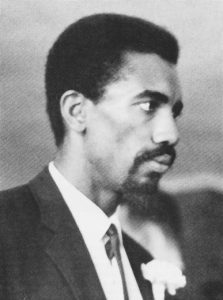 have ever in my life read” and Julius Lester (in The New York Times Book Review) called Dumas "the most original Afro-American poet of the sixties." In 1968, Henry Dumas was killed by police on a New York subway platform at age 33; but the reputation of his surviving work, a vital part of the Black Arts Movement, has endured. His poetry and fiction were published in literary magazines during this lifetime, with more work being published posthumously over the years—like this collection of poetry first published in 1989. The Library also owns a collection of short fiction, with a more comprehensive new anthology, Echo Tree, on the way this summer. Read more about the life, tragic death, and work of Henry Dumas in this NPR article.
have ever in my life read” and Julius Lester (in The New York Times Book Review) called Dumas "the most original Afro-American poet of the sixties." In 1968, Henry Dumas was killed by police on a New York subway platform at age 33; but the reputation of his surviving work, a vital part of the Black Arts Movement, has endured. His poetry and fiction were published in literary magazines during this lifetime, with more work being published posthumously over the years—like this collection of poetry first published in 1989. The Library also owns a collection of short fiction, with a more comprehensive new anthology, Echo Tree, on the way this summer. Read more about the life, tragic death, and work of Henry Dumas in this NPR article.
The Oxford Book of Theatrical Anecdotes | edited by Gyles Brandreth
Gyles Brandreth has worked in the theatre for 40 years, as an actor, producer, writer, and broadcaster on BB1 and Radio 4. Published by Oxford University Press, who describe the book as the ultimate anthology of theatrical anecdotes, covering 400 years in 800 pages.
Maybe the People Would Be the Times | Luc Sante
Luc Sante has built a devoted following by writing prodigiously-researched shadowy histories (The Other Paris and Low Life: Lures and Snares of Old New York—essential reading), an acclaimed memoir (Factory of Facts), editing collections of vernacular photography (don’t miss his Folk Photography: the American Real-photo Postcard, 1905-1930), and translating works such as Novels in Three Lines by Félix Fénéon. Maybe the People Would Be the Times is his second collection of articles, reviews, and essays (after Kill All Your Darlings), quietly released in 2020. The pieces roam over the worlds of music, film, New York City, literature, photography, art, and more. Keep a notebook and pen nearby to track the references you are sure to want to hear, read, and see.
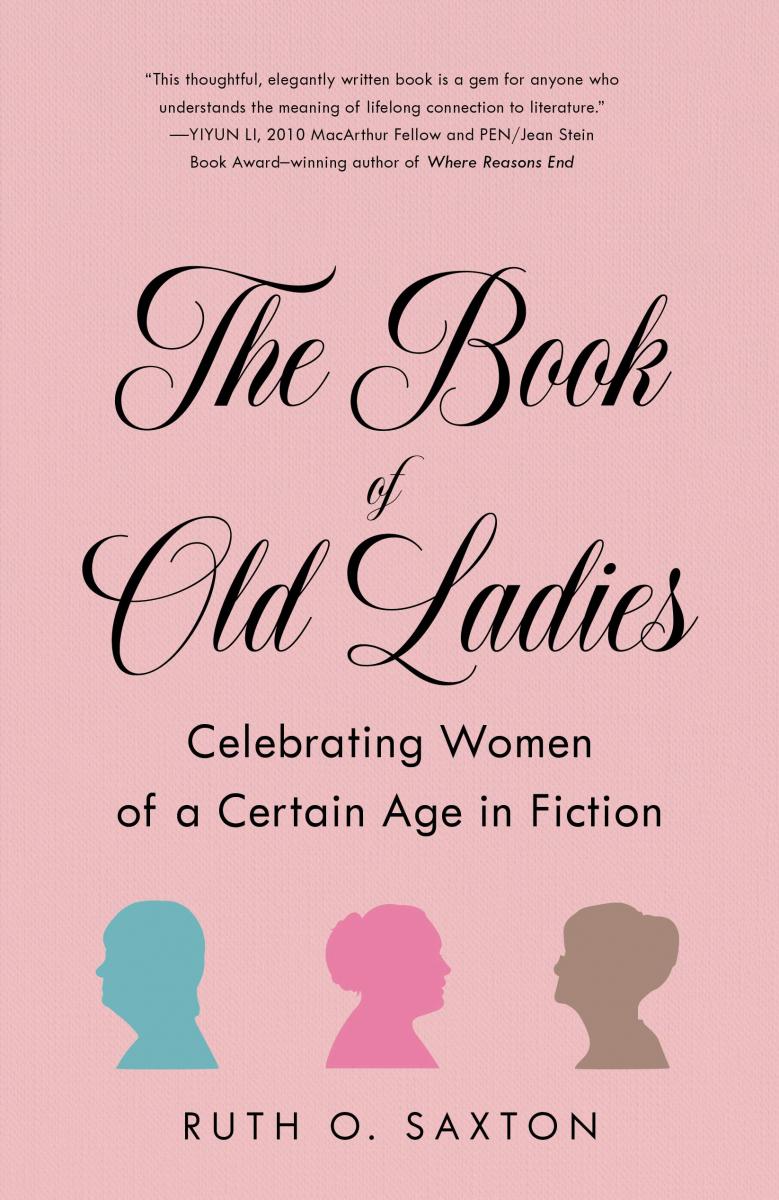
The Book of Old Ladies: Celebrating Women of a Certain Age in Fiction | Ruth Saxton
The Book of Old Ladies introduces readers to thirty stories featuring fictional "women of a certain age" who increasingly become their truest selves as they grow older—a topic seldom explored in literary criticism. “In this well-organized presentation, the author lays out a thoughtful analysis of works of fiction from the 20th and 21st centuries…and concludes with a compelling analysis of Margaret Drabble’s complex 2016 novel, The Dark Flood Rises…Saxton’s beautifully fluid prose is thought-provoking, informative…a valuable literary analysis.” –Kirkus
Gigantic Cinema: a Weather Anthology | edited by Alice Oswald & Paul Keegan
Through three hundred varied entries, this inventive anthology narrates the weather of a single day: from dawn, through rain, volcanic ash, nuclear dust, snow, light, fog, noon, eclipse, hurricane, flood, dusk, night, and back to dawn again. Entries include poetry, journals and jottings, diaries and letters, but mostly great poetry from Homer and Ovid to Frank O’Hara and Elizabeth Bishop. The editors employ an unusual structure: authors and titles appear in small print only at the base of each page or at the end of the book, so the texts are all "exposed to each other.” The Literary Review: “a brilliant anthology of disturbances and interruptions, in which finite mortals struggle to express the mysteries of invisible forces that tangle the senses.”
Tales of Two Planets: Stories of Climate Change and Inequality in a Divided World | John Freeman, editor
Speaking of weather... International in scope, this anthology gathers essays, stories, and poems by 35 writers expressing what it feels like to live with pollution, extinction, and climate change. Writers include Margaret Atwood, Lauren Groff, Edwidge Danticat, Mohammed Hanif, Aminatta Forna, and many more voices from around the world. Kirkus: “A powerful and timely collection on a topic that cannot be ignored.”
Any description of The Queen’s English would declare it a dictionary of slang terms used by members of the queer community. Though accurate, the description barely scratches the surface of Chloe Davis’s intent or accomplishment. After all, dictionaries are usually used only for reference, but Davis’s etymologies and histories are so fascinating, you’ll find yourself turning page after page looking for more. Moreover, the work is so lavishly illustrated you might mistake it for an art book. Library Journal calls it “a must for better understanding queer culture, especially the contributions of Black and Latinx trans people to pop culture at large.”
Yiddish: Biography of a Language | Jeffrey Shandler
Shandler is a professor in the Department of Jewish Studies at Rutgers University. In this 2020 publication, he tells the multifaceted history of Yiddish from its origins to the present in the form of a biographical profile. Each chapter addresses a different “biographical” topic concerning the character of the language and how it has been conceptualized, ranging across time, space, and speech communities.
Recent Arrivals: Last Interview Series & Literary Conversations
Independent publisher Melville House’s Last Interview series has built a devoted following at the Society Library over the years. The series is just as its name indicates: a transcript of musicians, writers, artists, activists, and more during their last interview before dying. (Many volumes include other previous “conversations,” as well.). The Library has over 30 volumes in the stacks, the latest feature Fred (Mister) Rogers, Shirley Chisholm, Ruth Bader Ginsburg, Toni Morrison, Marilyn Monroe, Johnny Cash, and Frida Kahlo. Speaking of interview series, we also recently acquired the Graham Swift and Paule Marshall volumes in University Press of Mississippi’s Literary Conversation series (about 50 volumes are available to members). You can read more about the many interview volumes in our stacks in this blog post.
Feline Philosophy: Cats and the Meaning of Life | John Gray
The Philosopher's Dog | Raymond Gaita
Two philosophical works offer a deeper perspective on those non-human animals with whom we share our homes and lives—as well as what is behind humanity’s relationship with our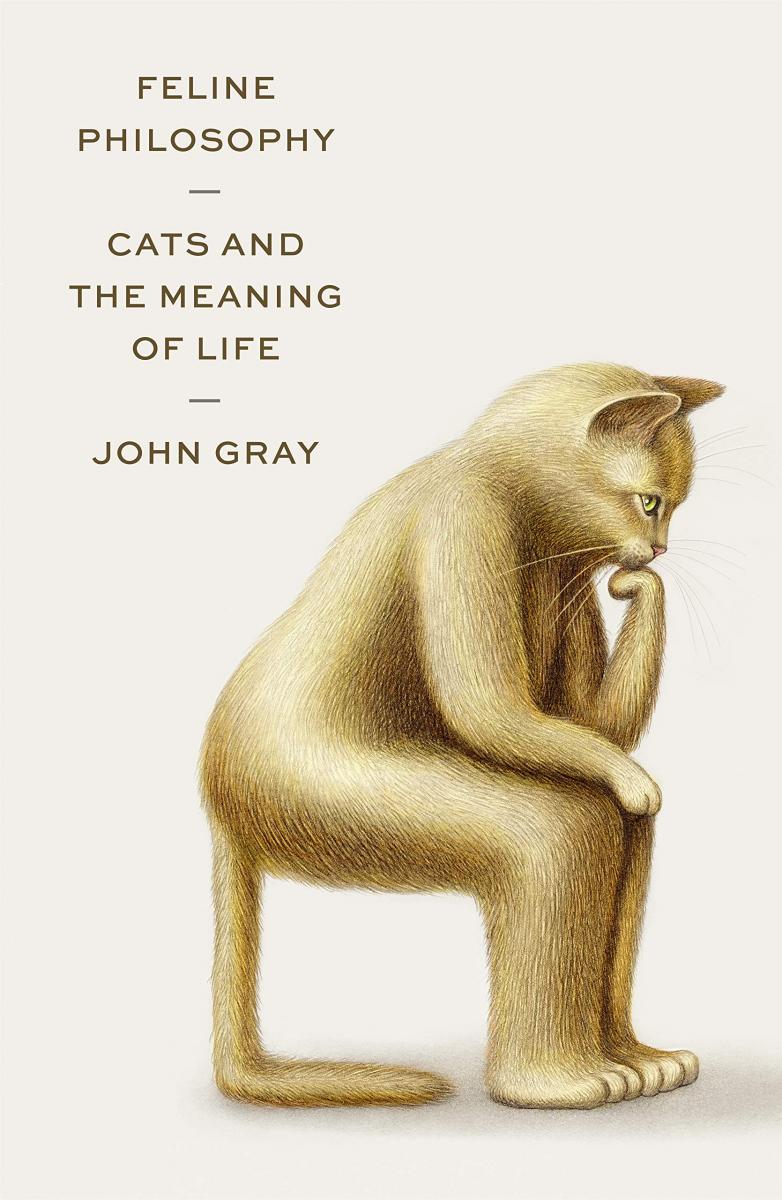 beloved pets and with the animal world in general. Gray is the author of Straw Dogs and many other books, known for his critiques of scientific hubris and our delusions of neoliberal progress and humanism. In Feline Philosophy he turns his attention to cats--and what they reveal about our torturous relationship to the world and to ourselves. In his usual fashion, Gray touches on a wide range of literature and philosophy. The Washington Post notes that “cat lovers will enjoy the celebration of feline mythos, from the cat gods of ancient Egypt to purring contemporary domestics, while hardcore Gray fans will be reassured by the usual references to immortality cults, Hobbes, the gulags and so on.” In The Philosopher’s Dog (a 2004 book recently donated), Raymond Gaita, professor of moral philosophy at King's College, London, uses touching, sincere personal anecdotes about pet ownership as a means to engage with big philosophical questions. Along the way, he tussles with great thinkers—from Socrates to Wittgenstein, Descartes to Hannah Arendt. Booklist praises: “Gaita's writing is deep and provocative [and readers] will learn much about their relationships with their pets and with each other.”
beloved pets and with the animal world in general. Gray is the author of Straw Dogs and many other books, known for his critiques of scientific hubris and our delusions of neoliberal progress and humanism. In Feline Philosophy he turns his attention to cats--and what they reveal about our torturous relationship to the world and to ourselves. In his usual fashion, Gray touches on a wide range of literature and philosophy. The Washington Post notes that “cat lovers will enjoy the celebration of feline mythos, from the cat gods of ancient Egypt to purring contemporary domestics, while hardcore Gray fans will be reassured by the usual references to immortality cults, Hobbes, the gulags and so on.” In The Philosopher’s Dog (a 2004 book recently donated), Raymond Gaita, professor of moral philosophy at King's College, London, uses touching, sincere personal anecdotes about pet ownership as a means to engage with big philosophical questions. Along the way, he tussles with great thinkers—from Socrates to Wittgenstein, Descartes to Hannah Arendt. Booklist praises: “Gaita's writing is deep and provocative [and readers] will learn much about their relationships with their pets and with each other.”
The Subversive Simone Weil: a Life in Five Ideas | Robert Zaretsky
Zaretsky is the author of acclaimed books on Camus, Diderot, Hume and more. In his latest, he looks at one of the most formidable and complex thinkers of the 20th-century, Simone Weil. Much has been written on Weil, and Zaretsky focuses less on the religious aspects of her thought, instead emphasizing her insights into politics and ethics. The “five ideas” in the title are what Zaretsky sees as key themes in her work: affliction, attention, rootedness, resistance, and goodness. The Baffler: “Zaretsky guides us through Weil’s complexities with impressive lucidity, keeping it lively and accessible, which is no small feat.” Publisher’s Weekly: “Zaretsky keenly brings Weil’s thinking up to the present...This memorable survey delivers a rich portrait of the intellectual currents that shaped a one-of-a-kind thinker. Those curious about Weil’s work will find this to be a welcome place to start.”
Think Least of Death: Spinoza on How to Live and How to Die | Steven M. Nadler
Pulitzer Prize-finalist Steven Nadler (University of Wisconsin) is the author of what many consider to be the standard biography of Spinoza (“highly recommended for the general reader”—Wall Street Journal), as well as several other works on the 17th-century Jewish philosopher and philosophy in general. In his latest, he has written what the Jewish Book Council calls “an indispensable book for anyone interested in learning about Baruch Spinoza.” Think Least of Death (Princeton University Press) provides an authoritative introduction to Spinoza Ethics and an account of how the philosopher can provide a guide to living one's best life.
Sex, Love, and Letters: Writing Simone de Beauvoir | Judith G. Coffin
Judith G. Coffin was the first researcher to open an uncataloged Beauvoir archive at Bibliothèque Nationale de France that contained about 11,000 letters to Simone de Beauvoir from her readers. These letters inspired this close look at de Beauvoir’s relationship with her audience. The correspondence examined in Sex, Love, and Letters dates from the late 1940s to the 1970s, touching on the aftermath of World War II, French colonial brutality in Algeria, and the gay liberation and feminist movements; from the publication of Beauvoir's acclaimed The Second Sex to the release of the last volume of her memoirs. Beauvoir encouraged her readers to see her as a friend and confidant, and they wrote to her not only with philosophical and political questions, but also for everyday advice. Coffin shows that Beauvoir and her readers often engaged in a dialogue, a dynamic relationship that did not necessarily flow in one direction. Kirkus: “The book is dense with ideas, but the clarity of Coffin’s prose makes her a genial guide. The highlight, though, is the letters themselves, which are eloquent, poignant, and often unassuming...This beautifully written, frequently moving book is a crucial addition to the scholarship on Simone de Beauvoir.”
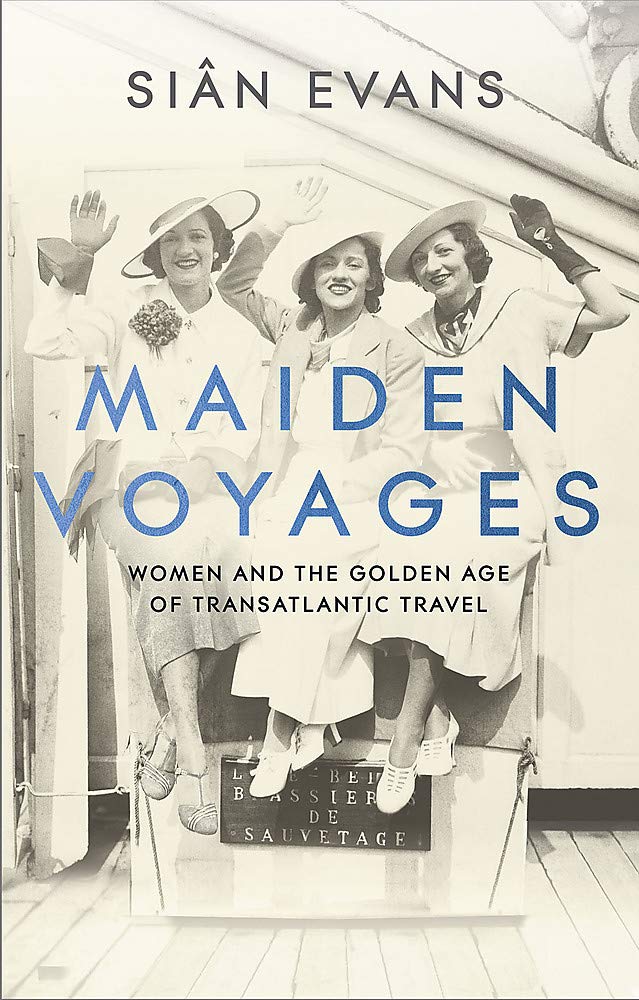 Maiden Voyages: Women and the Golden Age of Transatlantic Travel | Siân Evans
Maiden Voyages: Women and the Golden Age of Transatlantic Travel | Siân Evans
In this anecdotal social history, Evans looks at the experiences of a wide range of women on the grand ocean liners that crossed the Atlantic in the interwar years revealing how the golden age of ocean travel made it possible for women to transform their lives. Featuring a riveting cast “from Lady Astor to the half-starved refugees of Europe, from cabaret artistes and adventuresses to unflappable stewardesses and reliable lifeboatwomen (TLS).“ . A December 2020 review in the TLS praises this “wonderfully readable account.”
Spirit of Place: Artists, Writers and the British Landscape | Susan Owens
The Literary Review: “A wonderfully fluent and revealing study of the relationship between artists and writers and the British countryside [that} adroitly mixes literature, art and culture to show how perceptions of the British countryside have changed over the centuries and how artists and writers have been at the vanguard of these shifts.” Owens packs the book with a massive cast of characters and locales (The Guardian reviewer notes that 950 names of places and people appear in the index!), from Bede and the Gawain-poet to Gainsborough, Austen, W. G. Sebald and Barbara Hepworth. The Guardian praises “Owens’s prose, which can move from the earthy to the sublime as required, attuned to agricultural practicality and to Arcadian idealism.”
Dark, Salt, Clear: The Life of a Fishing Town | Lamorna Ash
Lamorna Ash was just 22 in 2017, when she immersed herself in the culture of Newlyn, a fishing village in Cornwall, as part of her master’s thesis in anthropology. Though her mom was from Cornwall and she visited as a child, Ash would still have a lot to prove to this tight-knit community, wary of outsiders, especially if she wanted to join the all-male crews on the fishing boats. The result is Dark, Salt, Clear, a book that holds much more appeal than the average graduate school paper. The Wall Street Journal: “Dark, Salt, Clear is an extraordinary debut, a deeply researched and deeply felt work of narrative nonfiction. It is the kind of book that ziplines readers to a different world. You’ll feel the damp sea air and smell the fish and ale in this vivid, multifaceted portrait of a hardworking, hard-drinking town and its salty residents, intimately connected to one another and to every aspect of its sea-to-market fishing industry.”
Border is a wickedly funny travel book composed of short profiles of the people living at the edges of Russia, the likes of whom you’ve probably never met. In the Wall Street Journal, Tara Isabella Burton writes: “Ms. Fatland sets out, she tells us (via Kari Dickson’s archly smooth, British-inflected translation), 'to understand a country and its people from the outside, from the perspective of its neighbours,' to identify a quintessential “Russianness” through an investigation of the often-liminal spaces of its periphery... What Ms. Fatland succeeds in doing, to the book’s credit, is both greater in scale and more intimate than her stated aim. Through a series of slickly told, vignette-style chapters, moving from the uncanny valley of North Korean package tours to drunken revelry in the Georgian mountains, Ms. Fatland offers less an account of Russianness than of its subversion: a polyphonic vision of often-arbitrary identities, histories and voices.”
The Island | Anna Maria Matute (translated from the Spanish by Laura Lonsdale)
New from Penguin Modern Classics: a 1959 coming-of-age novel set during a single summer on the island of Mallorca while the Spanish Civil War ranges on the mainland. Matia, the 14-year- old first-person narrator, has been sent to Mallorca to live with her grandmother after being expelled from her convent boarding school. Amidst the ancient hatreds, civil war, and present-day passions colliding around her, Matia is forced to ask herself “what kind of monster am I now, no longer a child, but definitely, definitely not a woman?” A TLS review praises Matute’s insightful exploration of how the “’sordid world of men and women’ devours a child’s innocence against their will,” as well as the rich descriptions and vivid characters in this “brilliant, devastating” novel. Matute died in 2014, and the New York Times obituary noted that her “explorations of alienation and the loss of innocence children experienced during and after the Spanish Civil War made her one of Spain’s most popular and acclaimed writers.”
old first-person narrator, has been sent to Mallorca to live with her grandmother after being expelled from her convent boarding school. Amidst the ancient hatreds, civil war, and present-day passions colliding around her, Matia is forced to ask herself “what kind of monster am I now, no longer a child, but definitely, definitely not a woman?” A TLS review praises Matute’s insightful exploration of how the “’sordid world of men and women’ devours a child’s innocence against their will,” as well as the rich descriptions and vivid characters in this “brilliant, devastating” novel. Matute died in 2014, and the New York Times obituary noted that her “explorations of alienation and the loss of innocence children experienced during and after the Spanish Civil War made her one of Spain’s most popular and acclaimed writers.”
British Library Women Writers Series
My Husband Simon | Millie Panter-Downes
O, the Brave Music |Dorothy Evelyn Smith
Tea is So Intoxicating | Mary Essex
The publishing arm of the British Library has released a collection of works by 20th century women writers. This series highlights the best middlebrow fiction from this era and includes books that have long been popular with our members. Of the seven initial offerings, the library owns 4 from the first printings, but the three above are new to the collection. If you’re interested in what else they have republished, you can find the full list here.
The Turncoat | Siegfried Lenz
The last summer before the end of World War II, Walter Proska, the turncoat of the title, has been posted by the German Army to a swampy outpost on the border with Ukraine and Byelorussia. He is stunned by the heat, attacked by mosquitoes, abandoned by his own troops in the face of the resistance, but also forced to submit to the increasingly absurd and inhuman orders of his commanding officers. Written in 1951, The Turncoat was rejected by Lenz’s publisher, who thought that the story of a German soldier defecting to the Soviet side would be unwelcome in the context of 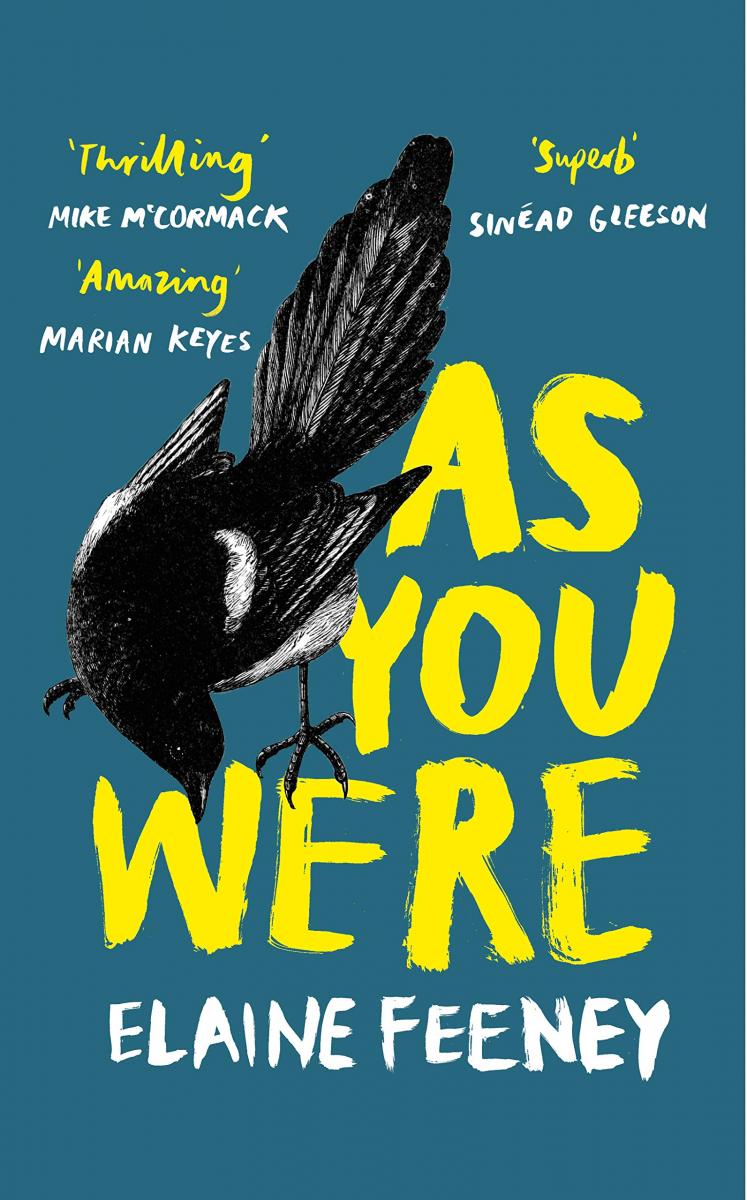 the Cold War. It would have been the second published book of Lenz’s young career—an award-winning output that would eventually see the publication of dozens of books. The manuscript was forgotten for nearly seventy years before being rediscovered after the author’s death. This antiwar satire still shocks, decades after its completion.
the Cold War. It would have been the second published book of Lenz’s young career—an award-winning output that would eventually see the publication of dozens of books. The manuscript was forgotten for nearly seventy years before being rediscovered after the author’s death. This antiwar satire still shocks, decades after its completion.
As You Were | Elaine Feeney
Sinead Hynes, the protagonist of Elaine Feeney’s debut novel, is a young mother and property developer. She has been diagnosed with a terminal illness, though she’s kept this fact from her family. After suddenly collapsing, she is placed in a ward with other patients and where all the present-day action of the novel takes place. Though sprinkled with hilarious observations, this is largely a novel about women, their grief and the institutions that fail them. Ireland has produced an unusual number of acclaimed young novelists (Eimear McBride, Sally Rooney, Naoise Dolan, etc.) but Feeney’s book feels most closely aligned another brilliant Irish writer, Edna O’Brien. Winner of the 2021 Kate O'Brien Award for new fiction by an Irish woman, and shortlisted for the Irish Book Award's novel of the year.
Savushun: A Novel about Modern Iran | Simin Daneshvar
Set in the later years of WWII, when the British occupied Iran, Savushun is the story of Zari, the matriarch of a landowning family in the city of Shiraz. She is a wife and mother who is mostly concerned about the safety and happiness of her family and rarely leaves the confines of her garden, even while her patriotic husband gets involved in the greater fights against imperialism, tribal politics, and corruption. Eventually the world creeps inside her garden walls the novel tells story of the growing social and political awareness of Zari. Savushun was the first Persian novel written by a woman to appear in Iran, and did so to wide critical acclaim. It remains popular in Iran more than fifty years after its publication, having sold more than half a million copies.
Roy’s World: Stories, 1973-2020 | Barry Gifford
Barry Gifford is the author of dozens of neo-noir novels and story collections that explore the margins of American society, including the Sailor and Lula series (adapted into David Lynch’s “Wild at Heart”). His cult following is large and devoted. Roy’s World collects all the semiautobiographical stories he has written over the years featuring Roy Winston, a pre-teen growing up in mid-century Chicago and points south amidst his parents’ seedy world of racketeers, show girls, and washed up ham’n’egg prize fighters. Jonathan Lethem describes his style as “William Faulkner by way of B-movie film noir, porn paperbacks, and Sun Records rockabilly.” “This collection is full of gems” (Publisher’s Weekly).
River of Blood: The Story of American Slavery from the People Who Lived It: Interviews & Photographs of Formerly Enslaved African Americans | edited by Richard Cahan and Michael Williams; foreword by Adam Green
In the 1930s, the WPA sought out men and women who had been enslaved before and during the Civil War for interviews. The stories of 3,000 former slaves were eventually transcribed and the result was a collection known as the Slave Narratives. These interviews have been compiled before and other interviews with former slaves exist in the Library’s collection, such as these pioneering 1929-1930 interviews conducted by Ophelia Settle Egypt (is someone writing her biography?). But River of Blood is more than just a republication of old material. It condenses tens of thousands of pages from the WPA project into short excerpts from about 100 former slaves and, most importantly, pairs their text with photographic portraits taken by the WPA workers who recorded their stories. The 700 photographs taken for the Slave Narrative Collection have been largely overlooked (the negatives are missing), and rarely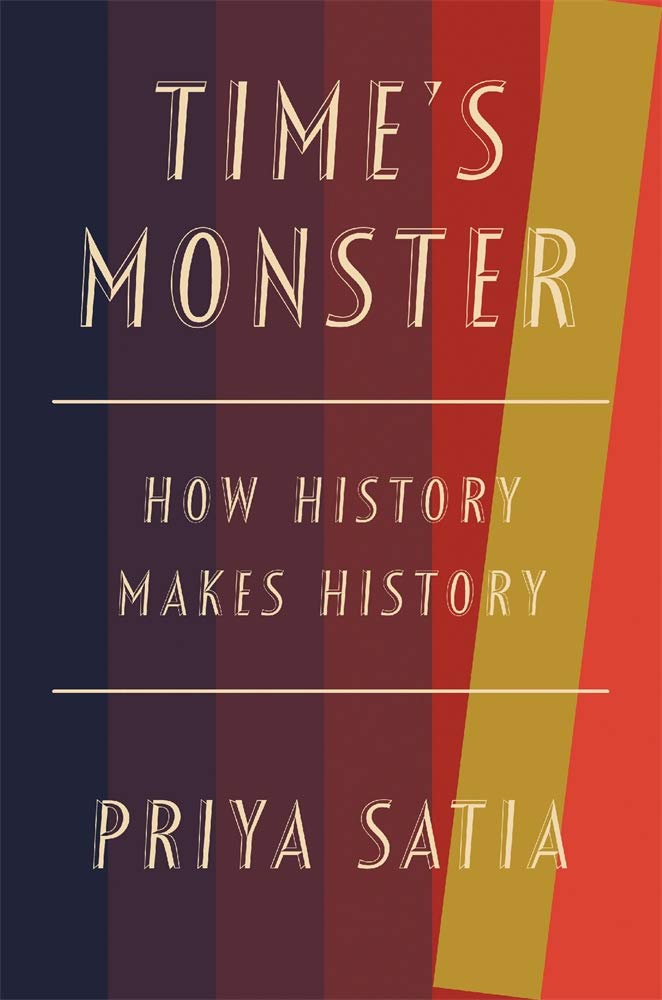 seen. Their publication here gives the interviews an even more powerful impact. Booklist praises this “supremely well-designed and sensitively edited volume...portraits and text are reunited and the result is monumental.”
seen. Their publication here gives the interviews an even more powerful impact. Booklist praises this “supremely well-designed and sensitively edited volume...portraits and text are reunited and the result is monumental.”
Time's Monster: How History Makes History | Priya Satia
In this rigorous work of historiography, Priya Satia seeks to expose the discipline of history’s “collusion in empire”— how historians have framed the ways that empire is understood—and the dramatic consequences. The Wall Street Journal: “Satia’s book is attractive and original. Her core thesis is that historians provided moral cover and justification for Britain’s ‘liberal imperialism’… and in her telling of the imperial tale, British historians were the ethical and moral enablers of the statesmen, soldiers and adventurers who would conquer half the world.” An account of alternative visions articulated by anticolonial thinkers such as William Blake, Mahatma Gandhi, and E. P. Thompson is included, as well as a look at the challenges today’s historians have to confront.
Others of My Kind: Transatlantic Transgender Histories | Alex Bakker, Rainer Herrn, Michael Thomas Taylor, and Annette F. Timm
This remarkable history documents a group of transgender people in Europe and North America in the first half of the twentieth century. In an unwelcoming climate, they found each other, created communities, and advocated for themselves to doctors and the public. Many of the letters and photographs are recreated here, which prove a sharp contrast to the medical and psychological profiles that dominated the depictions of transgender individuals from this period.
The Haunting of Alma Fielding: a True Ghost Story | Kate Summerscale
Hilary Mantel: “Kate Summerscale's well-researched book brings insight and sensitivity to material darker than is usually admitted” (New Statesman, Books of the Year). The latest by Kate Summerscale (The Suspicions of Mr. Whicher) appeared on several 2020 best of the year lists in the UK and was shortlisted for a couple of literary prizes. In London, 1938, a young woman named Alma Fielding experienced terrifying supernatural events in her suburban home: objects flying, doors slamming and a terrapin appearing out of thin air. Nandor Fodor—the chief ghost hunter for the International Institute for Psychical research—was brought in to investigate. When the evidence began to indicate that Fielding was actually an accomplished performance artist, Fodor used his training in psychoanalysis and discovered a different and darker type of haunting: trauma, alienation, loss.
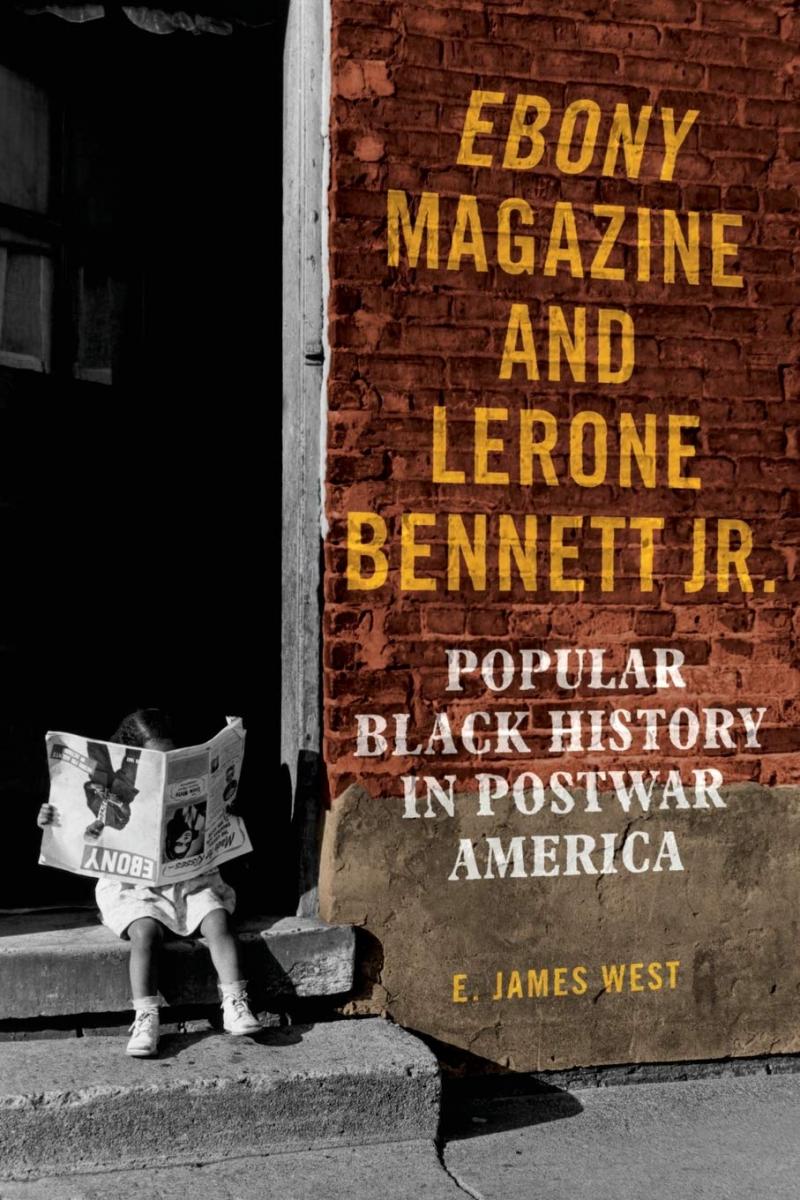 Ebony Magazine and Lerone Bennett Jr.: Popular Black History in Postwar America | E. James West
Ebony Magazine and Lerone Bennett Jr.: Popular Black History in Postwar America | E. James West
“This astute history shines a welcome light on a pioneering journalist,” the reviewer in Publisher’s Weekly writes. Lerone Bennett Jr was Executive Editor of Ebony Magazine from the late 1950s into the 1980s, and as in-house historian (and monthly columnist) he helped establish Ebony as a key voice in the popular black history revival that flourished after World War II. West's scholarly exploration of Ebony's political, social, and historical content illuminates the intellectual role of the magazine and its overlooked contribution to African American scholarship.
Twenty Years On: Views and Reviews of Modern Britain | Peter Stansky
Peter Stansky was Professor of History at Stanford for over thirty years. He has written many books on some of the seminal figures in British political and cultural history from the mid-nineteenth century to the mid-twentieth: Gladstone, William Morris, the Bloomsbury Group, George Orwell, Phillip Sassoon, and more. His latest book, Twenty Years On, draws on his writings of the last twenty years, covering his usual territory (modern British culture and history), interweaving culture, art, politics, and society.
The Last Slave Ships: New York and the End of the Middle Passage | John Harris
Long after the transatlantic slave trade was officially outlawed in the early nineteenth century by every major slave trading nation, merchants based in the United States were still sending hundreds of illegal slave ships from American ports to the African coast. Traffickers based in New York City were determined to make Lower Manhattan a key hub in this illegal slave trade to Cuba. The New Republic: “John Harris’s The Last Slave Ships offers the first comprehensive study of the size and extent of Manhattan’s role in the illegal transatlantic slave trade. Though the U.S. and Britain abolished the transatlantic slave trade in 1808, U.S. enforcement was so lax that, between 1850 and 1867, around 200,000 enslaved Africans were smuggled into Cuba and Brazil—where slavery remained legal until the 1880s—on slave ships operated by Manhattan-based traffickers…It is a remarkable piece of scholarship, sophisticated yet crisply written, and deserves the widest possible audience.”
When Brains Dream: Exploring the Science and Mystery of Sleep | Antonio Zadra and Robert Stickgold
Antonio Zadra and Robert Stickgold are two of the world’s leading researchers in the science of sleep. Here they bring their expertise to bear on dreams, providing the current state of the science to a wider audience. The Wall Street Journal says, “The promise of When Brains Dream is to address four questions: ‘What are dreams? Where do they come from? What do they mean? And what are they for?’ In a masterly narrative, the authors answer these and many more questions with solid scientific research and a flair for captivating storytelling... When Brains Dream is a rarity among popular science books, one that neither dumbs down the research nor steps outside of what we know, and yet is still a page-turner.”
Herbarium: The Quest to Preserve and Classify the World's Plants | Barbara M. Thiers 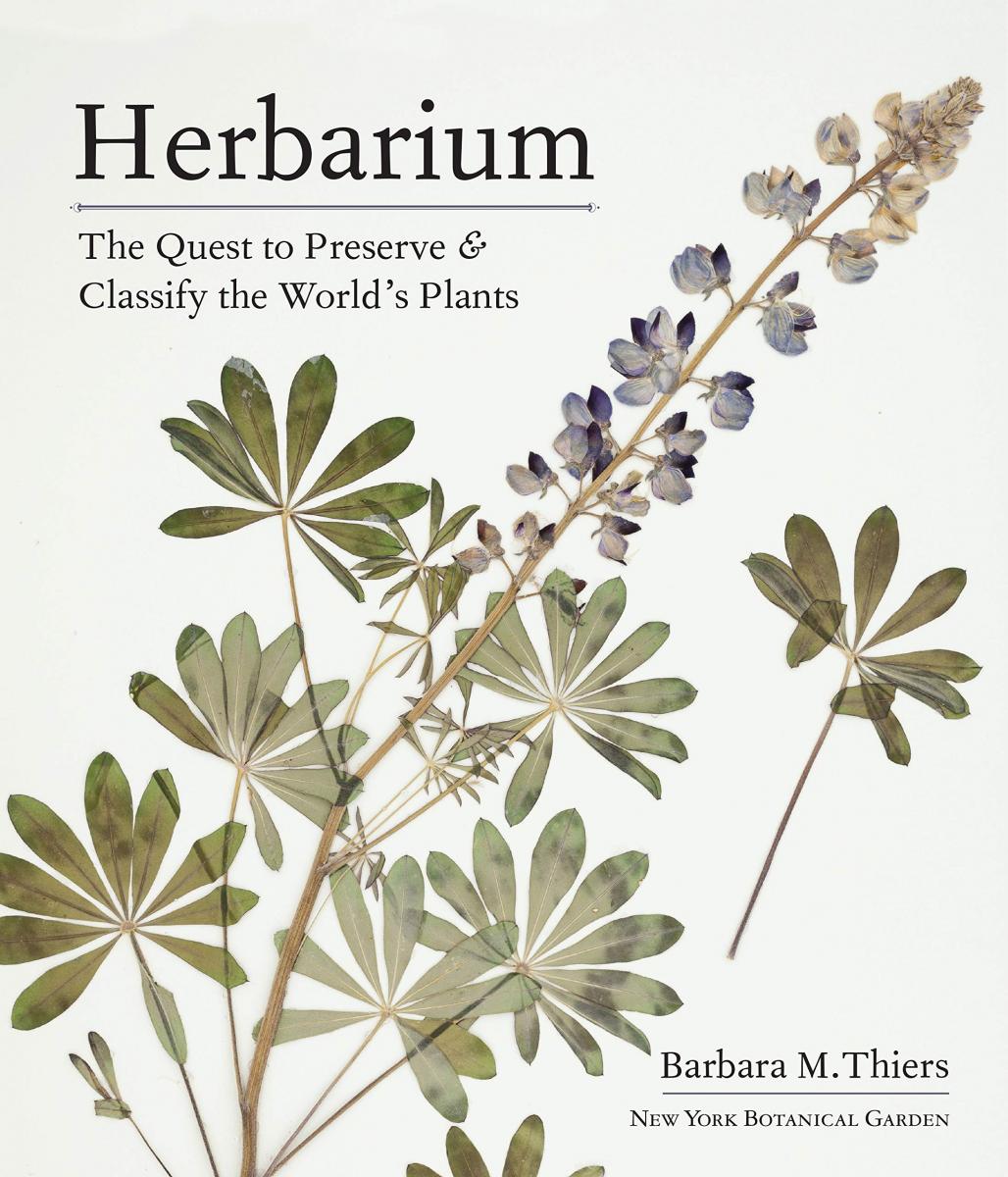
For at least 500 years, people have been saving plant and fungi specimens in an effort to save and study them. These collections are called herbaria, and they are the foundation for study of botany. Barbara M. Thiers, director of the William and Lynda Steere Herbarium at the New York Botanical Garden, explains their importance, not only to the history of biology, but also to scientists studying the samples to understand how climate change affects the natural world today. Though the history and science are admirable, readers will likely find the most pleasures in the visuals—the illustrations are simply spectacular. Library Journal says, “With lavish illustrations of places and people; portraits of key players; herbaria specimens; and beautiful, full-color artists’ renderings, this carefully researched, detailed homage to herbaria will appeal to those deeply interested in plant exploration and botany.”
The Hidden Spring: A Journey to the Source of Consciousness | Mark Solms
“In a crowded field, consciousness has a strong claim to being the strangest thing in the universe. The feeling of being aware is the most fundamental and familiar aspect of anyone’s existence: you can know, with rock-solid certainty, that you’re conscious right now, even if literally all else might be a hallucination brought on by mind-altering drugs. Yet it’s widely held that science has no clue how the spongy physical stuff of your brain could produce something as radically non-physical as your mind,” writes Oliver Burkeman in the Guardian. Mark Solms has an intriguing new theory that might just unravel this mystery. Solms is a neuroscientist who became increasingly interested in this tangled question and risked his reputation to return to school and study psychoanalysis. It is at the intersection of these disciplines that he posits his answer. Solms argues that emotions are intrinsically conscious in a way that sensory perceptions are not, and therefore that consciousness ultimately arises not in the cortex, the seat of advanced intelligence, but in the more primitive brainstem, where basic emotions begin. To his credit and our benefit, Solms is able to explain these difficult concepts to an interested reader without the same expertise.
Nose Dive: A Field Guide to the World's Smells | Harold McGee
Harold McGee set himself a task that seems impossible: to catalog all the world’s smells. Nose Dive is the result of his quest and he succeeds better than you might imagine. Naming it one of the best science books of 2020, the Financial Times declared it a “tour-de-force.” But it’s not the extent of the achievement that should draw you to the book, but the pleasures (and the horrors!) to be discovered on every page. And lest you think that the author is unequal to the task, Sam Keen assures that is not the case. Reviewing the book for the Wall Street Journal, Keen states “It’s important to note that Mr. McGee isn’t blustering here, the way some wine snobs speak cryptically—and unverifiably—of certain “overtones” in their favorite vintages. Like an analytical chemist, he catalogs the exact molecules that each food or substance emits, and how they combine like musical notes to produce a scent chord.” Surely one of the most unusual reference books in the Library's collection.
Minerva and Hedgehog Review are now available in the Members’ Room.
Minerva describes itself as “"the leading international ancient art and archaeology magazine enjoyed by academics and non-specialists alike." Stories and travelogues cover history, art, archaeology, and mythology and regular features include interviews with well-known writers and academics. (Thank you to the generous donor who created the Kallisto Fund for Ancient Civilization for supporting our subscription.)
The Hedgehog Review offers “critical reflections on contemporary culture.” It is published three times a year by the Institute for Advanced Studies in Culture at the University of Virginia, and has won numerous awards. (You can play catch up with this 2020 anthology: The Hedgehog Review Reader: Two Decades of Critical Reflections on Contemporary Culture.)
The Library now offers a greatly expanded collection of digital magazines via OverDrive. Access is available to all members and magazines can be read on almost any device. Click here for more information.
